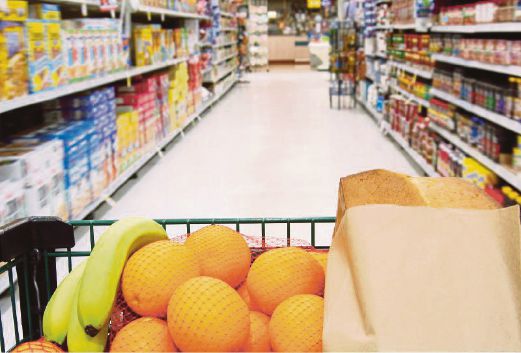THOSE who eat small meals and snack sensibly are usually more successful in losing weight or maintaining an ideal weight. Eating too little to lose weight — or waiting too long between meals — can make you tired, hungry and irritable.
In extreme cases, you may pass out if your blood sugar level drops too low. And when you do eat, you’ll be so hungry you may overeat or binge on sugary foods for an instant “fix” of energy. Snacking is, therefore, a good way to stay in control.
On the flip side, mindless snacking is one of the main reasons for the obesity epidemic. I have observed many people eating between-meal snacks that are literally like a main meal.
The key is to control portion sizes. Here are some tips on what to look for:
USE THE NUTRITION INFORMATION PANEL AS A GUIDE
Eat the serving size given in the nutrition information panel on food labels. For example, if a cracker packet lists three pieces as a serving size on its nutrition information panel, have no more than three pieces when you snack.
SMALLER PLATES EQUALS LESSER FOOD
Use smaller plates when snacking. It’s human nature to fill up space whenever we find it. Therefore, if you use a large plate, you’ll tend to put more food on it as your sense of proportion will be distorted.
During a session with one of my overweight clients, I realised that he always eats his teatime snack using a dinner plate. By switching to a smaller plate, his portion sizes decreased significantly.
DON’T FALL FOR GIMMICKS
Food vendors use marketing gimmicks to make you feel like you’re getting a good deal. How many times have you seen advertisements encouraging you to order a larger portion for an extra ringgit?
The problem with doing so is that you will eat more than you intend to. And when you end up with a health problem, your medical bill is going to be more than RM1.
READ BETWEEN THE LINES
Same goes for items that are described as “grande”, “giant”, “double” or “extra large”. They all mean a portion that will be too large for you even as a meal, let alone as a snack.
MAKE IT HARD TO GET
If you cannot resist a second helping, avoid serving snacks on the dining table. An elderly client of mine had a wife who always made kuih or pastries for teatime. She would serve it on a platter at the table. My client would end up eating 3 to 4 pieces in the course of drinking his tea.
By taking one piece on a small plate and leaving the rest in the kitchen, my client was better able to control his urge to eat more.
SPLIT LARGE PORTIONS
If you’re snacking with a friend, consider sharing if your order is large. However, don’t make the mistake of ordering more dishes just because you’re sharing. Sharing several dishes is as good as eating a whole portion by yourself.
AVOID TEMPTATION
Never go grocery shopping on an empty stomach, say experts, because you’ll be more apt to buy unnecessary items. Who can blame one for being tempted when there’s so much food in the store?
I’ve observed many shoppers grabbing convenient snack foods such as a bag of chips or a chocolate bar to snack on while they are doing their shopping. If you had eaten your meals you would not need to feast on that entire bag of chips.
SNACKS TO GO
If you’re always on the go, consider packing quick healthy nibbles. People who are always on the go often end up missing meals.
I had a client like that. By the end of the day, she was always famished. This always resulted in a vicious cycle of overeating and yoyo dieting. But by keeping healthy snacks in her tote bag, she was able to keep her hunger in check.
Portion sizes
for snacking
1 steamed corn on the cob
1 fresh popiah
1 small tub of yoghurt
1 cup of milk
3 crackers
1 small Chinese bowl of soya beancurd (tau foo fah)
1 piece of local kuih
40g packet of nuts


No comments:
Post a Comment